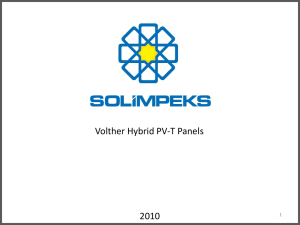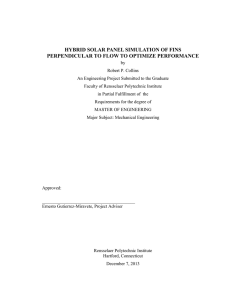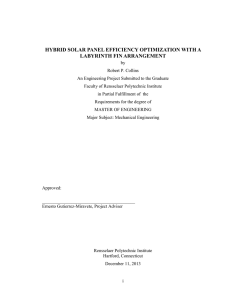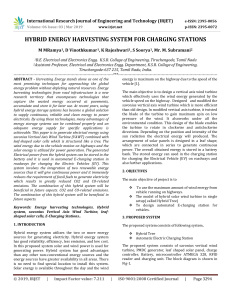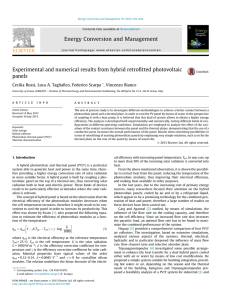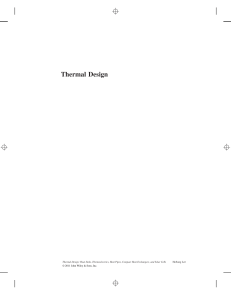MATHEMATICAL MODEL OF A HYBRID SOLAR PANEL Robert Collins and Ernesto Gutierrez-Miravete
advertisement
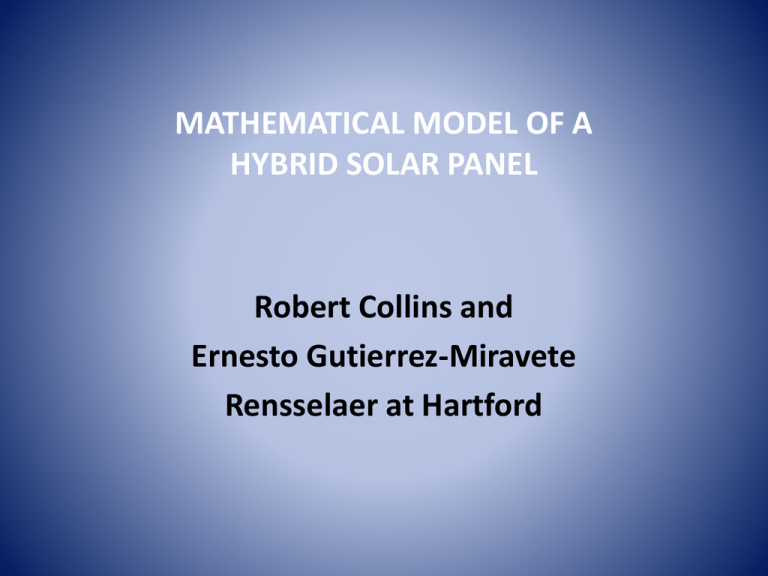
MATHEMATICAL MODEL OF A HYBRID SOLAR PANEL Robert Collins and Ernesto Gutierrez-Miravete Rensselaer at Hartford Hybrid Solar Panel • Uses PV cell to convert a fraction of the solar irradiance into electricity. • Uses heat exchanger principles to store most of the solar irradiance NOT converted into electricity as useful thermal energy inside a working fluid. • The use of the heat exchanger reduces heating of the PV cell and increases its conversion efficiency. Hybrid Solar Panel Schematic Steady 2D Turbulent Flow of a Non-Isothermal Newtonian Fluid: Governing Equations ∂vx/∂x + ∂vy/∂y = 0 v · ∇vx = − ∂p/∂x + µ∇2 vx + ρgx v · ∇vy = − ∂p/∂y + µ∇2 vy + ρgy k-ε Turbulence Model ρ Cp v · ∇T = k∇2 T Boundary Conditions Model Geometry and Input Material PV Cell Thermal Paste Copper Water Property Value ρ k 𝐶𝑝 ε ρ k 𝐶𝑝 ρ k 𝐶𝑝 ρ k 𝐶𝑝 = 𝐶𝑣 μ Reference 2329 130 700 .60 3500 2.87 .7 8700 400 385 997.1 .611 4.184 902 x 10-6 Silicon [11] [12] Copper Water @ 25°C Finite Element Model Mesh Computed Velocity Field Computed Temperature and Heat Flux Fields Hybrid Panel Overall Efficiency Conclusions • The greatest overall PV/T module efficiency of 85.7% occurs with the labyrinth arrangement or the arrangement with 27 top and 27 bottom fins that are ¾ the height of the flow path. This is an approximate 5.7% increase in efficiency over the arrangement with no fins. • When connected as an array, three modules linked in a head to tail arrangement, heat the water by 16.5 degrees Celsius and collect energy from the environment in the form of usable electrical and thermal energy.


